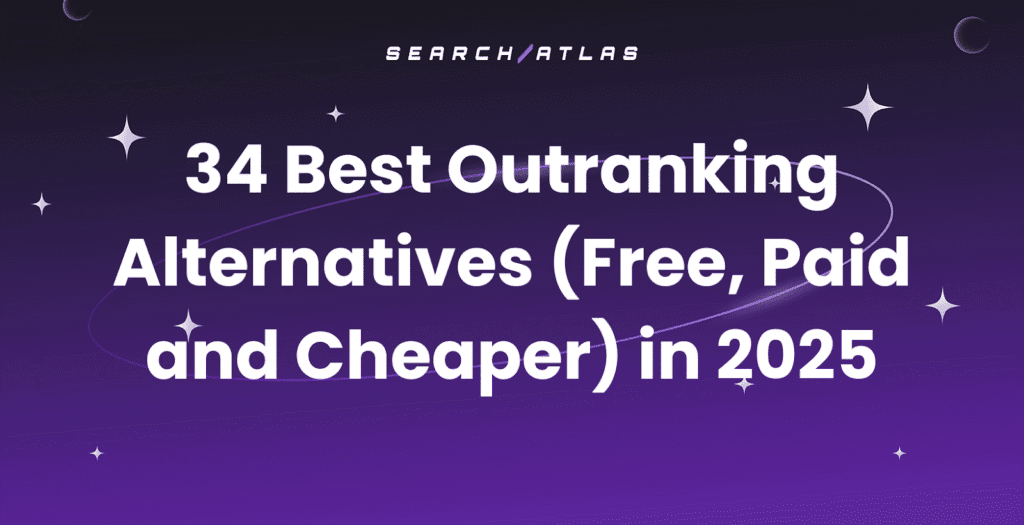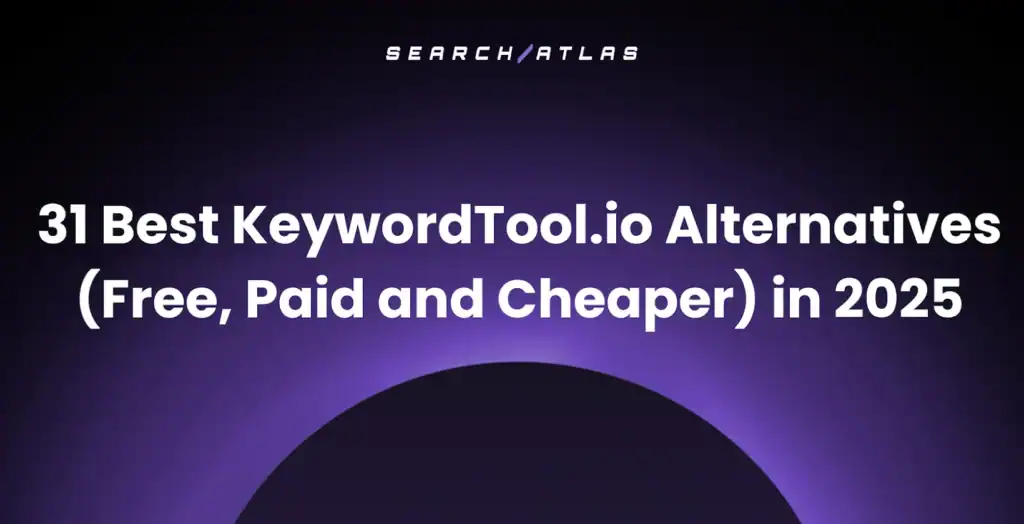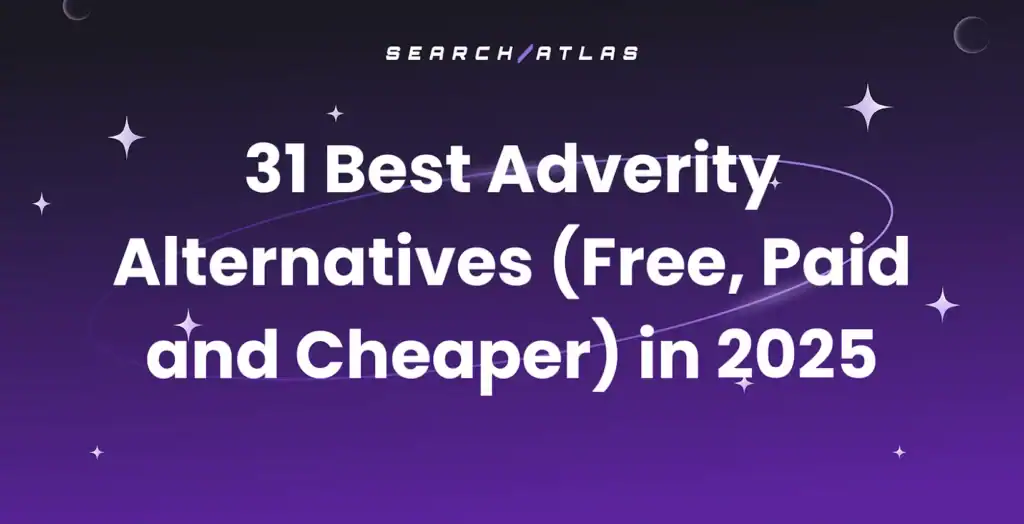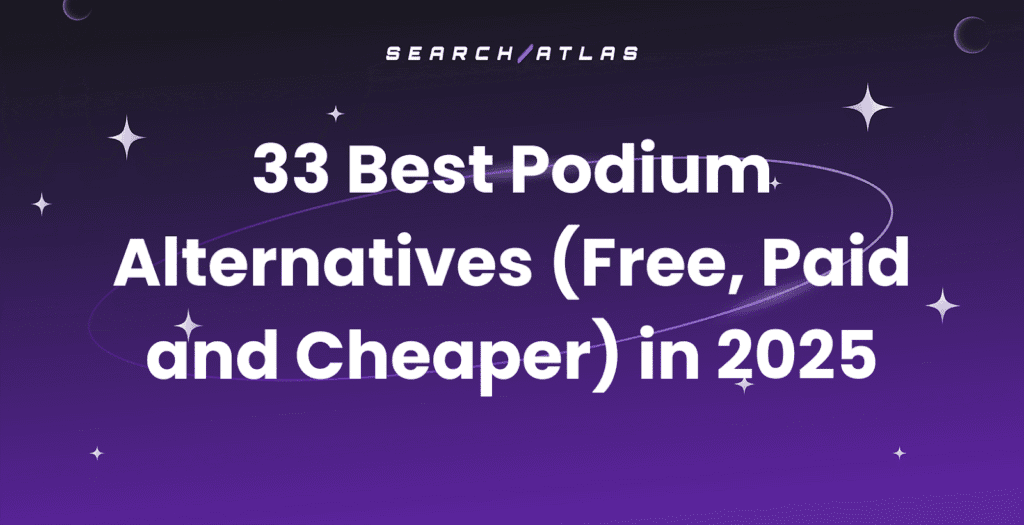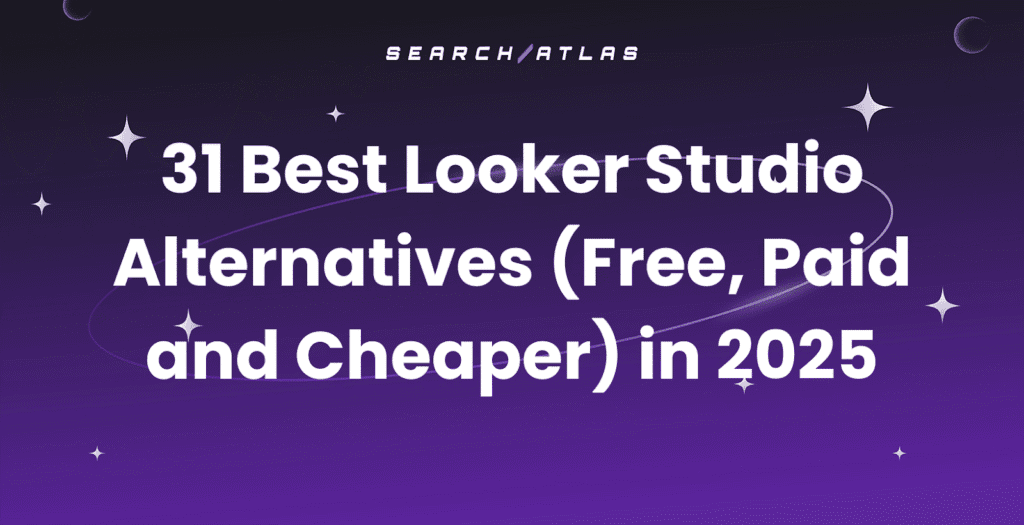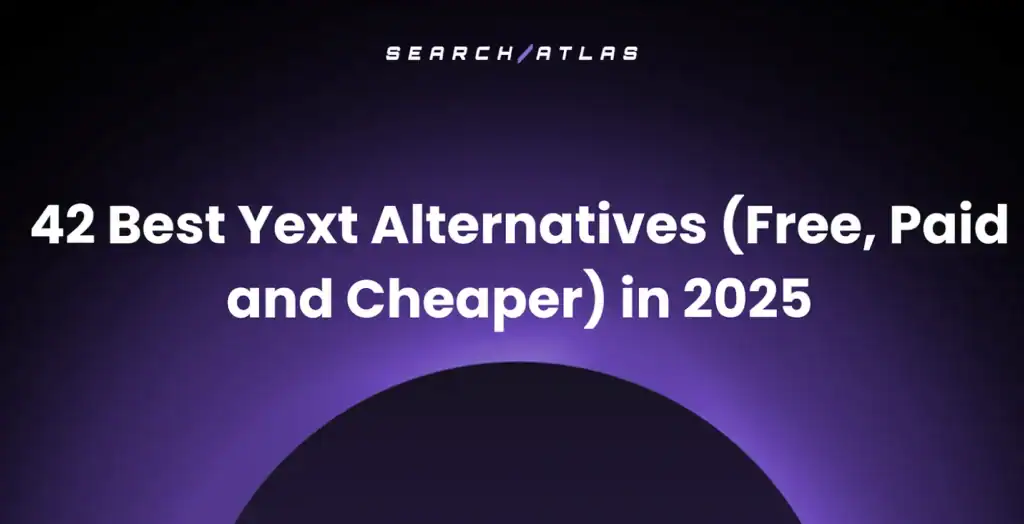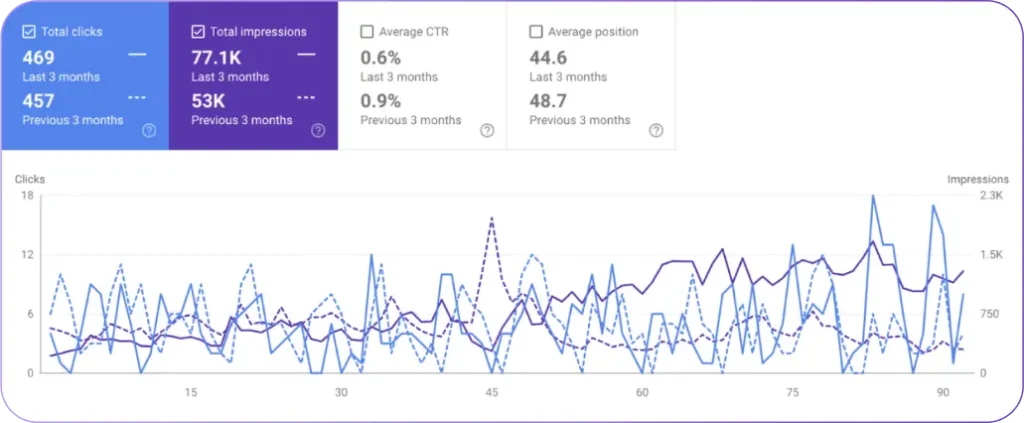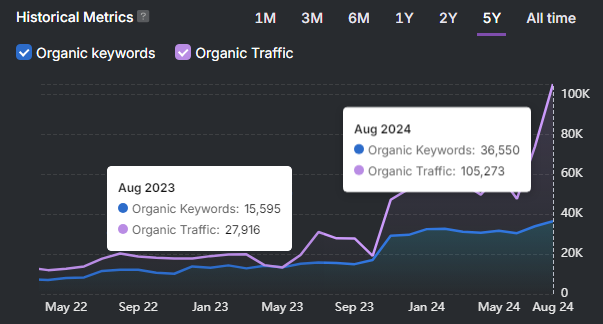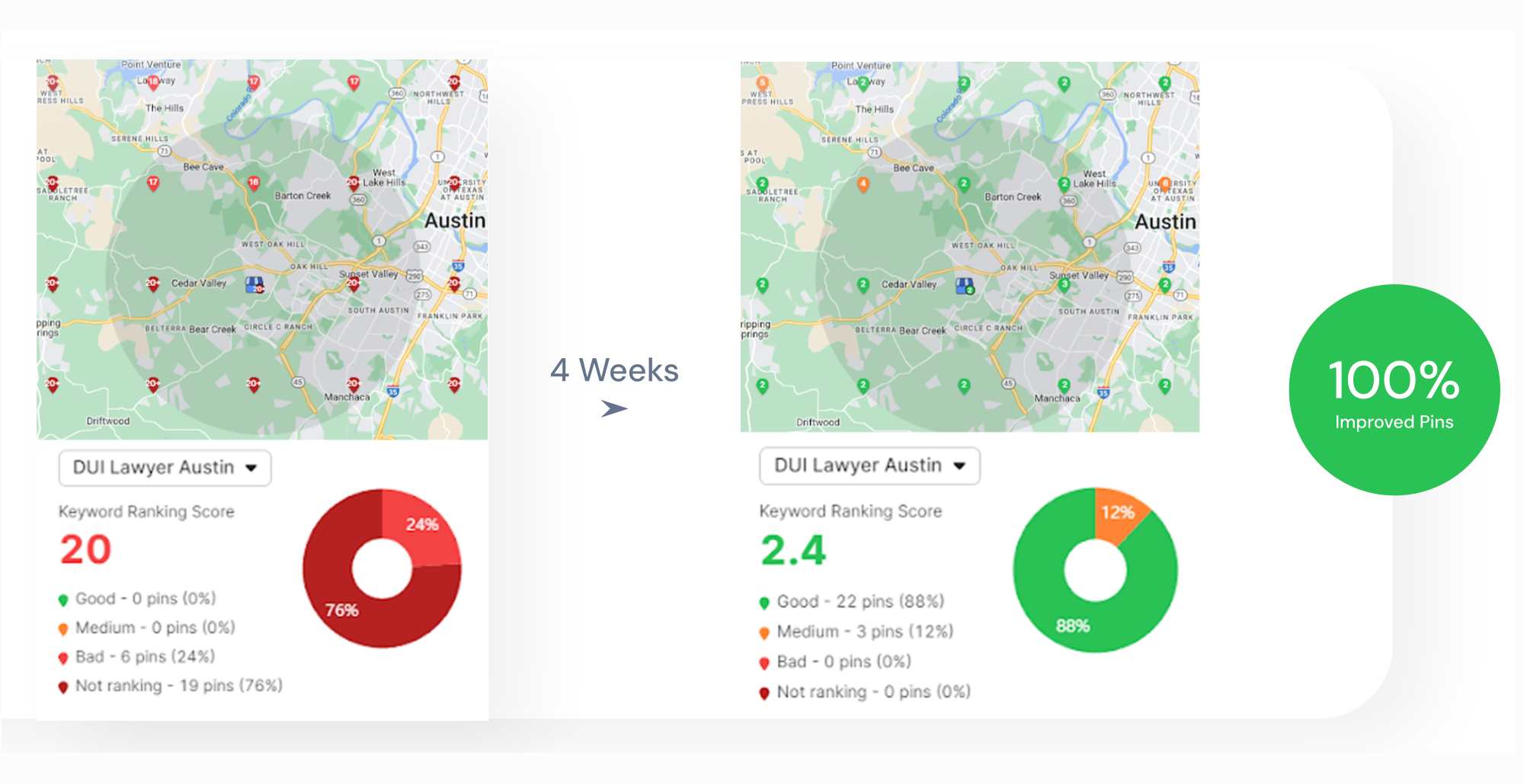Most websites underperform in search because their pages aren’t structured, written, or optimized correctly. This on-page SEO checklist helps you focus on the specific elements that influence search visibility, from meta tags and headings to internal links and keyword placement.
It’s the part of SEO where you have the most direct control. Whether you’re updating old content or publishing new pages, this checklist shows you exactly where to start and what to prioritize.
Content and Keyword Optimization
Effective on-page SEO starts with understanding what your audience is searching for and how your content can meet that demand.
1. Choose and Map the Right Target Keywords
Target keywords are the search terms people use when looking for content like yours. Choosing them carefully is the foundation of every on-page SEO effort.
Focus on four core factors:
- Search volume reflects how many people are searching for the term.
- Keyword difficulty (KD) estimates how hard it is to rank.
- Search intent tells you what the user is really looking for: information, navigation, commercial comparison, or a transaction.
- Related keywords show additional terms that support your main topic.
- NLP keywords are key phrases that help search engines understand your content is complete and on-topic.
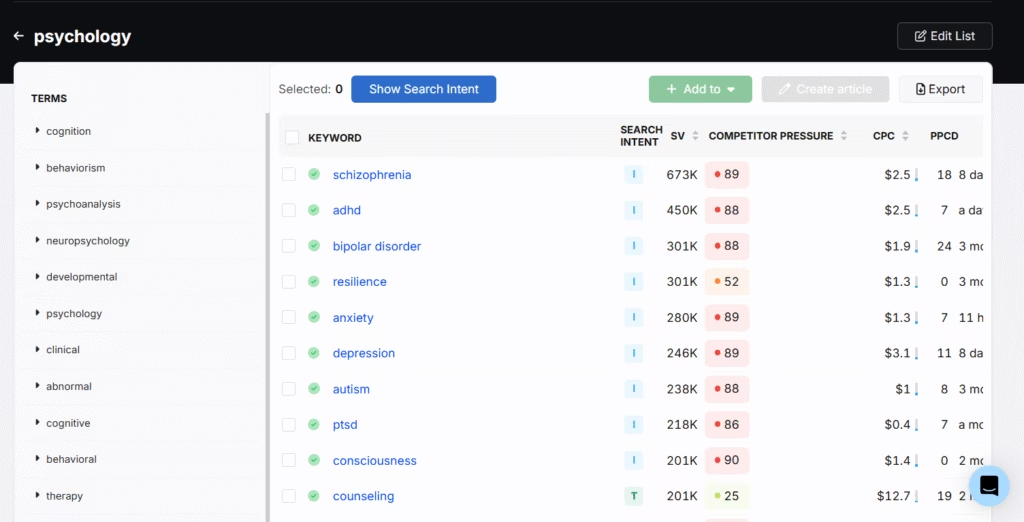
Grouping keywords by topic and intent helps you build structured content strategies. Look for terms that signal strong relevance and align with what your page delivers.
The Content Genius tool in Search Atlas supports this by automatically identifying related keywords for your chosen focus term. Its Terms Assistant suggests where to place these supporting terms directly in your content.

2. Write a Clear, Keyword-Focused Title Tag
Your title tag tells both search engines and users what your page is about. It also shows up as the headline in search results, so it directly affects your click-through rate (CTR).
Keep it simple and focused. Place your primary keyword early in the title and avoid cramming in too many secondary terms. Make sure it reflects your content accurately and stays under 60 characters so it doesn’t get cut off.
Your H1 should match your title tag to confirm relevance for visitors and help search engines understand the page topic.
The Search Atlas On-Page Audit tool checks your title tag for keyword usage, length, clarity, and over-optimization. It provides recommendations when improvements are needed.
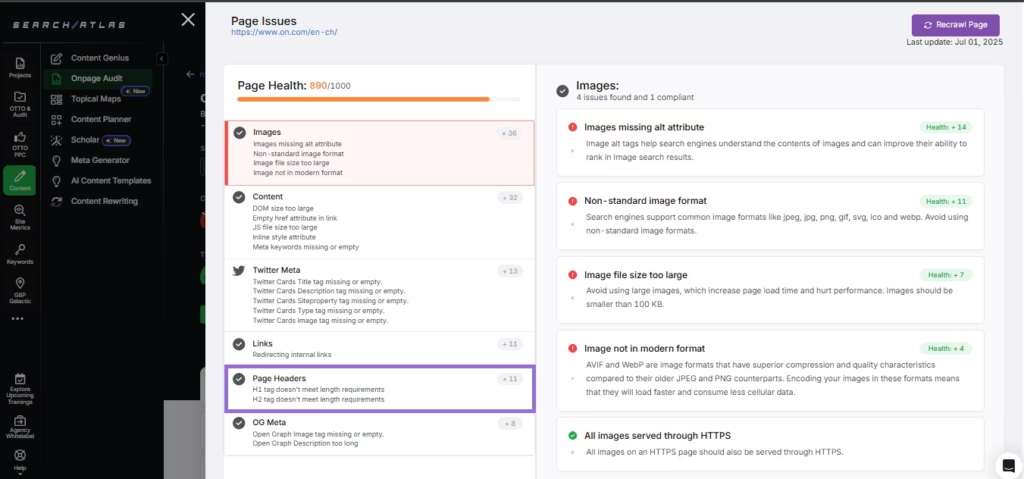
4. Optimize Your Meta Description for CTR
Meta descriptions don’t directly affect rankings, but they do influence whether people click your link in search results.
Write a short summary that clearly explains what users will get from the page. Include your target keyword naturally, highlight your unique value, and finish with a call-to-action (CTA) like “explore now” or “get started”.
Keep it around 150 characters to avoid getting cut off. While Google may rewrite descriptions, writing your own reduces that risk.
To detect missing or weak meta descriptions, use the Onpage Audit tool in Search Atlas. From the dashboard, go to Content > Onpage Audit, run or select an audit, then click View Audit.
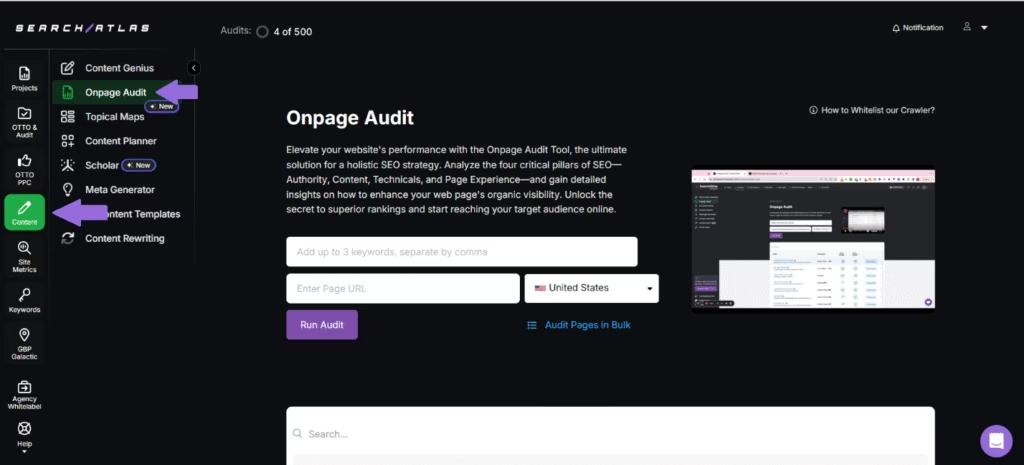
The audit results will show whether a page has a well-optimized meta description or if one is missing, or poorly written.
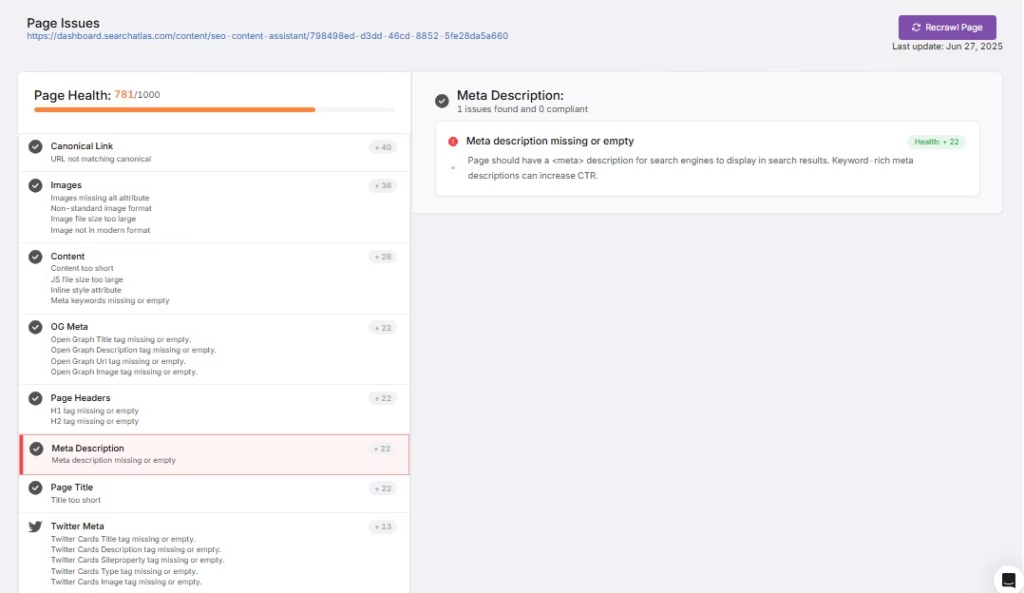
Use this to prioritize updates and ensure consistency across your site.
5. Create SEO-Friendly URL Slugs
Your page’s slug is the part of the URL that comes after the domain. Clean, descriptive slugs help both users and search engines understand what your page is about.
- Use your primary keyword.
- Separate words with hyphens (e.g., your-primary-keyword).
- Avoid filler words (a, and, the).
- If you change a URL, use a 301 redirect from the old one to preserve rankings.
This protects your rankings and avoids broken links.
6. Place Keywords Naturally in Your Body Content
Search engines need to see your keywords in the body content to understand what your page is about. But forced repetition or awkward phrasing hurts both SEO and readability.
Use your main keyword early, ideally in the first paragraph. Then include related terms and subtopics throughout the content to show depth.
Use variations and synonyms naturally, and avoid repeating the same phrase too often. This keeps the content readable and avoids keyword stuffing, which can hurt both rankings and user experience. Review your content regularly to ensure keywords are used in a way that supports clarity and relevance.
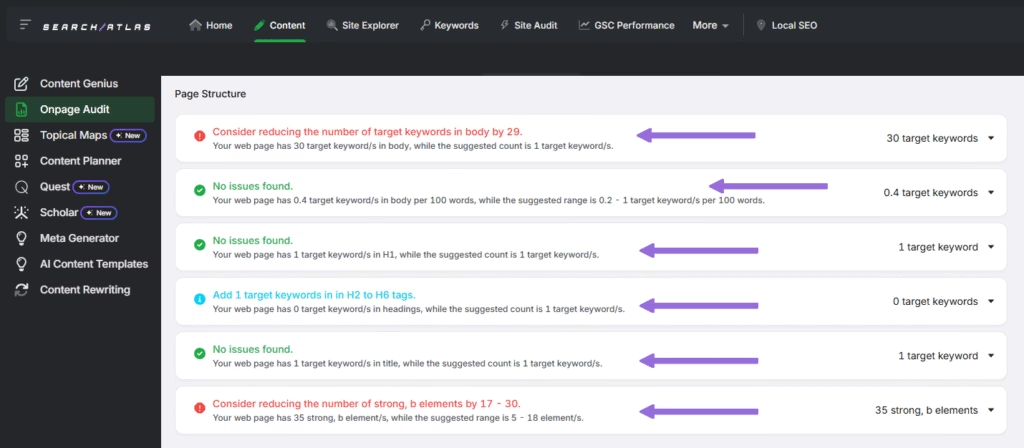
Structure and Navigation
Search engines rely on clear hierarchies and internal links to understand relationships between pages and to distribute ranking signals.
A messy or shallow structure can confuse crawlers and users, reducing the visibility of your content.
7. Use Header Tags to Organize Content Clearly
Headers break content into scannable sections, improving user experience and helping search engines understand your content’s structure. Use one H1, followed by H2s for main sections and H3s for subsections.
Adding relevant keywords to headers can support ranking without affecting readability.
Go to Content > Onpage Audit in Search Atlas, on the page you want to audit, click View Audit. You’ll see a breakdown of H1–H6 usage and keyword coverage in headers to identify missing or incorrectly structured header tags.
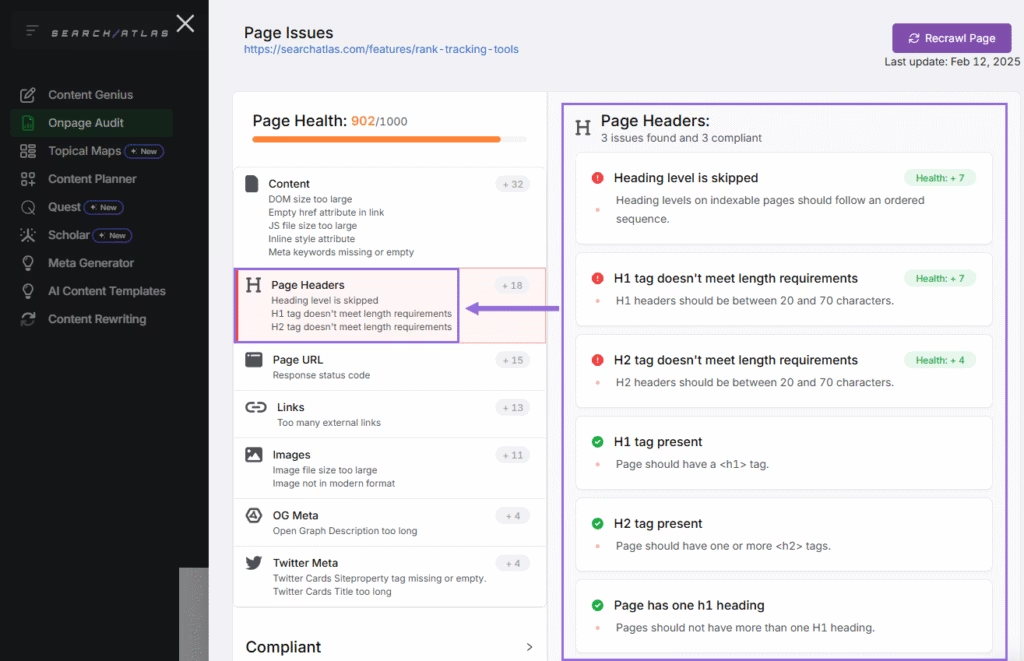
OTTO SEO, the Search Atlas SEO AI agent, can automatically generate or optimize these headers based on the page’s content and structure.
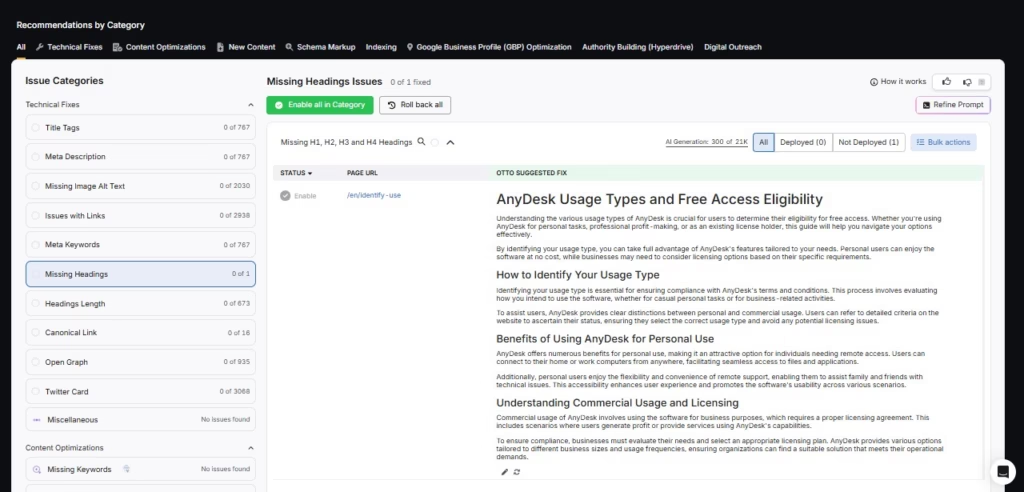
8. Add Internal Links That Support UX and SEO
Internal links connect one page on your site to another. They improve navigation, reduce bounce rates, and help distribute authority from high-ranking pages to others that need a boost.
Use descriptive anchor text so users and search engines understand what to expect when clicking. Add links where they naturally support the topic, and prioritize connecting to important or high-converting pages. Avoid overlinking to the same page in a short span.
The Onpage Audit tool in Search Atlas highlights where internal links are missing or underused so you can spot opportunities to improve structure.
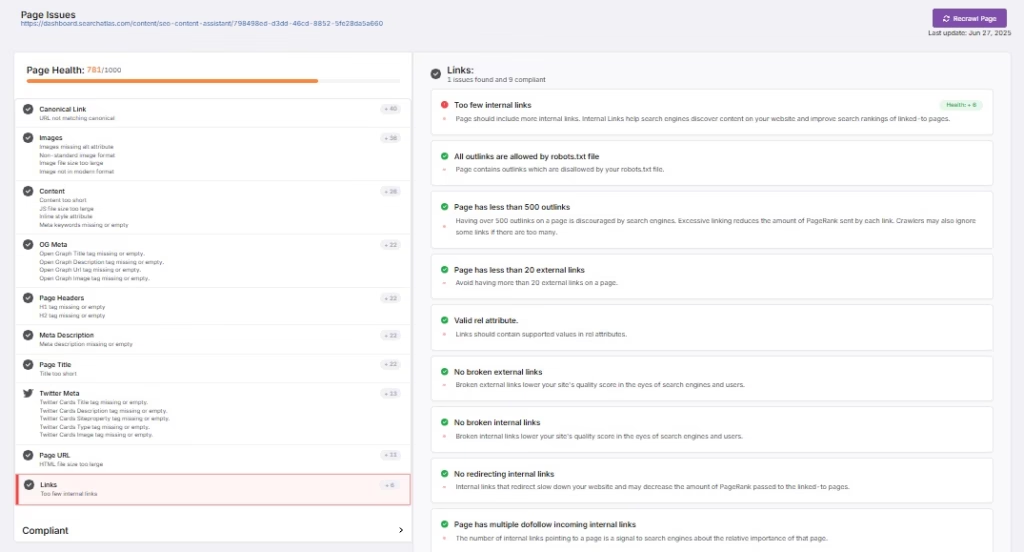
OTTO SEO can detect related content across your site and automatically insert relevant internal links to strengthen your structure without manual effort.
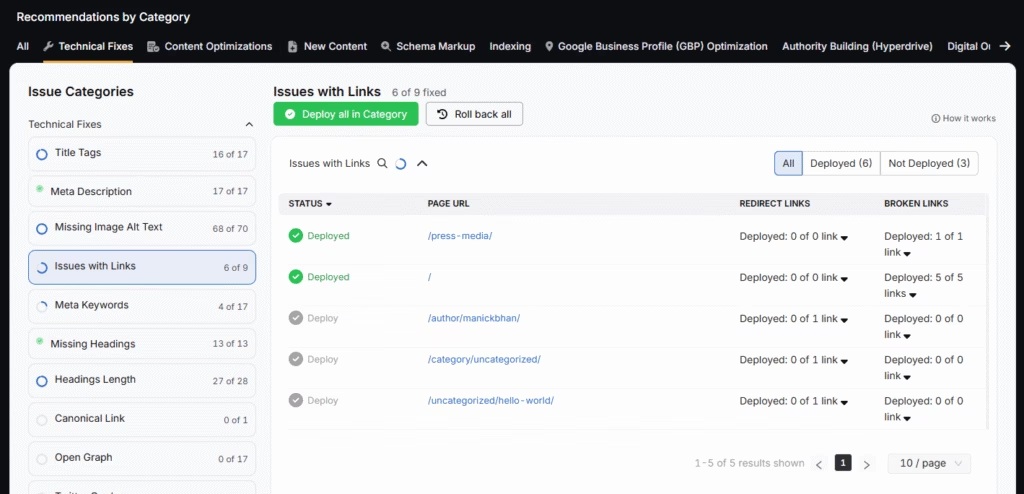
9. Add Optimized Visual Content
Images and videos enhance the user experience and help explain your content more effectively. But without proper implementation, they can slow your site or reduce accessibility.
- Use descriptive alt text for all images. This helps with accessibility and SEO.
- Compress images to ensure fast page load times.
- Use captions for videos.
OTTO SEO can also automate this task for you by injecting keyword-based alt text using page context and NLP analysis.
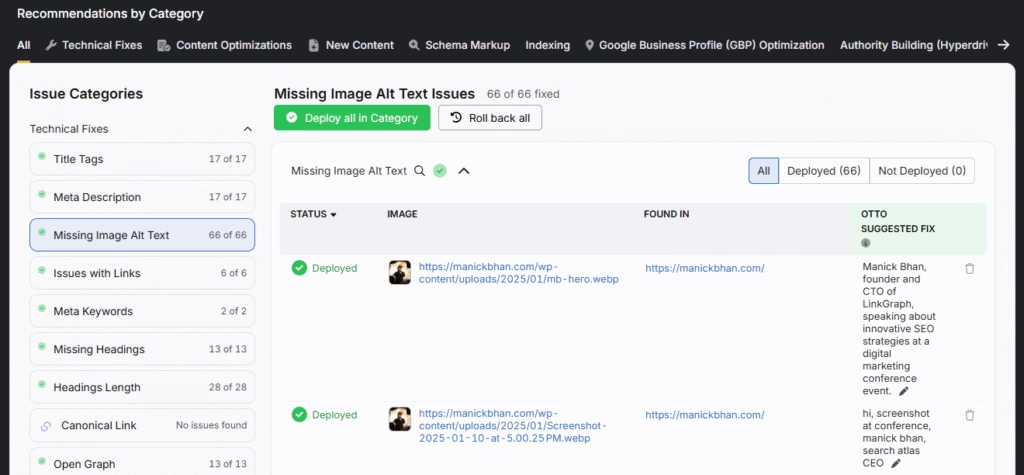
Advanced On-Page Optimization
Once your content is optimized and well-structured, you can take it a step further by improving how it’s maintained and expanded over time.
10. Update Outdated Content
Content that once ranked high can quickly lose visibility if it no longer matches current user expectations or industry standards. Outdated stats, broken references, or changes in search intent can cause rankings to drop, especially if competitors have published newer content on the same topic.
Start by reviewing content that used to bring in page traffic but have declined. Update numbers, swap out old examples, and revisit your intro and call-to-action (CTA) to reflect any changes in relevance or product focus.
Look at the current top-ranking pages for the same keyword and adjust your format, structure, or subtopics to better align.
11. Add Supporting Content Like FAQs, Comparisons, and Use Cases
After covering your main topic, adding supporting content helps answer more user questions, match broader search intent, and increase relevance. These additions make your page more complete and competitive.
Start by reviewing what users still want to know. Include a short FAQ section based on real questions from search data or customer feedback. Add side-by-side comparisons when users are choosing between options. If applicable, describe how your content applies in real-world use cases.
These sections help capture featured snippets, improve time on page, and provide a clear structure for expanding your content over time.
Keep Your On-Page SEO Consistent
Strong on-page SEO isn’t something you check off once. It’s a process that requires consistent review and gradual improvement. Content gets outdated, user intent shifts, and competitors continue to optimize.
To stay ahead, review your key pages often and update where needed. Focus on improving titles, meta tags, internal links, and keyword usage. Address content gaps, refine readability, and make sure your content continues to match search intent.
Consistent updates lead to better rankings, stronger engagement, and long-term gains in traffic and conversions.


